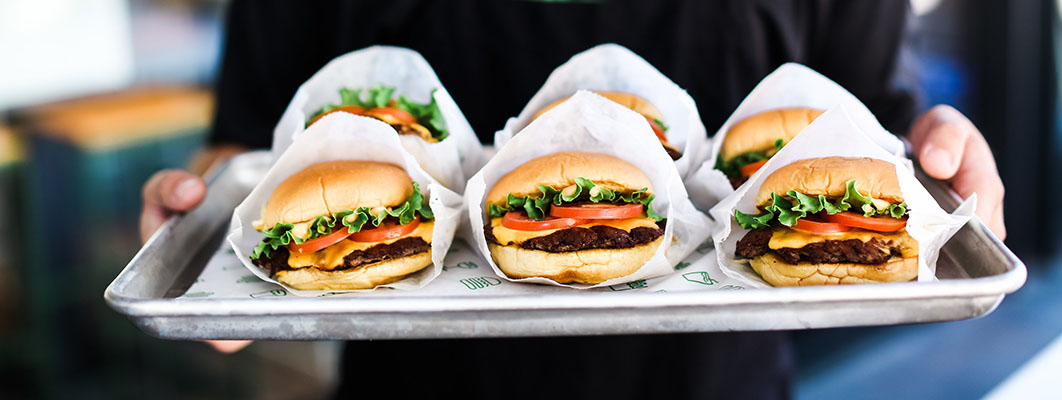Shake Shack Loan Shakes Things Up

This week, burger chain Shake Shack engaged in an interesting bit of crisis communications, one that’s well worth taking a close look at. The company made the right move in rejecting some quick bucks, and did a decent job communicating the situation.
Like seemingly everything these days, this crisis relates to the coronavirus (COVID-19). Congress passed a bailout for small businesses called the Paycheck Protection Program. The $349 billion fund was created to provide cheap loans that are forgivable if the borrower doesn’t fire anyone before June 30.
Unfortunately, the program has mostly generated mass confusion. The loans have to be applied for through the companies’ banks, many of which don’t seem to know how the program (the “PPP”) works or don’t have the personnel to deal with it. And, anyway, large companies got in first and the fund is depleted (though Congress may soon replenish).
Many of those big outfits that managed to dine at the public trough, including Shake Shack (2019 revenue: $595 million), which got a $10 million loan, are publicly traded. In other words, they have access to moolah through the capital markets.
The ‘PPP’ came with no user manual and it was extremely confusing.
— Danny Meyer and Randy Garutti of Shake Shack
The PPP is limited to companies with fewer than 500 employees but, through the magic of lobbying, contains exceptions for restaurant chains. In addition to Shake Shack, the owner of Ruth’s Chris Steak House (2019 revenue: $468 million) got $20 million in loans by applying through two subsidiaries. Potbelly Corp. (2019 revenue: $410 million), owner of Potbelly Sandwich Shop, got a $10 million loan.
Peculiar Position
This fueled a backlash because funds intended for small businesses were instead going to big businesses. Shake Shack found itself in a peculiar position especially because chairman and founder Danny Meyer has a reputation as an ethical operator.
So it was maybe not too surprising that Meyer and Shake Shack President Randy Garutti announced in a LinkedIn post on Sunday, April 19, that the company would return the $10 million. On Friday, April 17, it had announced it raised $150 million by selling Shake Shack stock.
In their nearly 2,000 word LinkedIn statement, Meyer and Garutti struck a neutral tone, neither overly angry nor in any way self-pitying. They explained in detail how they came to take the loan.
We will be returning our Paycheck Protection Program loan. More information from our founder @dhmeyer + CEO @randygarutti here: https://t.co/gXNsO1RfKf pic.twitter.com/tMtVNlY6ou
— SHAKE SHACK (@shakeshack) April 20, 2020
They had a convenient enemy in that the roll out of the program has been such a disaster. “The ‘PPP’ came with no user manual and it was extremely confusing,” they wrote. Still, they decided to apply so they could hire back furloughed workers and hoped the situation with the program would become clearer.
Shake Shack felt it could apply because it has about 45 employees per restaurant, they said (and pointed out that few if any restaurants have 500 workers). They said the company was losing $1.5 million a week keeping locations open with only take-out service.
‘Up in Arms’
Meyer and Garutti said they didn’t realize the PPP was first come, first served and could run out of money. “Late last week, when it was announced that funding for the PPP had been exhausted, businesses across the country were understandably up in arms,” they wrote.
Smartly, they had a call-to-action list for the industry as a whole: adequate funding for the PPP, assignment of a local bank to apply for restaurants’ loans, and elimination of the June forgiveness date.
The Wall Street Journal’s coverage of Shake Shack’s announcement noted the hit large companies’ reputations take for turning to the government in times of crisis. As Shake Shack has learned, you can’t buy — er, borrow — goodwill. It showed that sometimes long-term reputation is more important than short-term financial considerations.
The burger chain’s reputation will probably benefit from this move for some time to come.
Photo Credit: Shake Shack
This is an abridged version of an article that appeared today on the CrisisResponsePro paid subscription portal. (CrisisResponsePro subscribers can access the full version by clicking here. ID and password are required.) To take advantage of all of the content, data, and collaborative resources CrisisResponsePro has to offer, contact us at info@crisisresponsepro.com.




 Back to Blog
Back to Blog